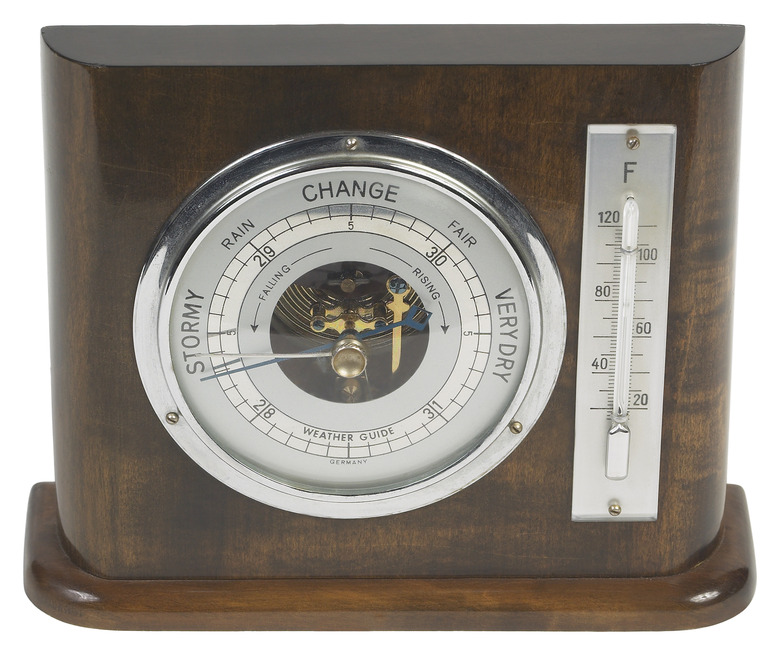How To Calculate The Temperature Drop Due To A Pressure Drop
The Ideal Gas Law relates an amount of gas to its pressure, temperature and the volume that it occupies. Changes that occur in the state of the gas are described by a variation of this law. This variation, the Combined Gas Law, lets you explore the state of the gas under different conditions. The Combined Gas Law reduces to the Gay Lussac Law when the gas volume is fixed. You can use the Gay Lussac Law to relate pressure changes to temperature changes.
Step 1
Represent the initial state of the gas with an initial temperature T1 and an initial pressure P1. P1 is the pressure of the gas before the pressure drop occurs. T1 is the temperature of the gas before the temperature drops.
Step 2
Calculate the proportionality constant (k) formed by the ratio of the initial temperature to the initial pressure. Use the formula: k = T1/P1. For example, if a gas at an initial temperature of 300 K and an initial pressure of 100 Pa, drops by 50 Pa, the proportionality constant k = 3 K/Pa = 300/100 = T1/P1.
Step 3
Multiply the drop in pressure by the proportionality constant k to obtain the drop in temperature. For example, if a gas at an initial temperature of 300 K and an initial pressure of 100 Pa, drops by 50 Pa, the change in temperature = 150 K = (3 K/Pa) x (50 Pa) = (k) x (change in pressure).
Cite This Article
MLA
Lewis, Pearl. "How To Calculate The Temperature Drop Due To A Pressure Drop" sciencing.com, https://www.sciencing.com/calculate-drop-due-pressure-drop-8739366/. 24 April 2017.
APA
Lewis, Pearl. (2017, April 24). How To Calculate The Temperature Drop Due To A Pressure Drop. sciencing.com. Retrieved from https://www.sciencing.com/calculate-drop-due-pressure-drop-8739366/
Chicago
Lewis, Pearl. How To Calculate The Temperature Drop Due To A Pressure Drop last modified March 24, 2022. https://www.sciencing.com/calculate-drop-due-pressure-drop-8739366/
